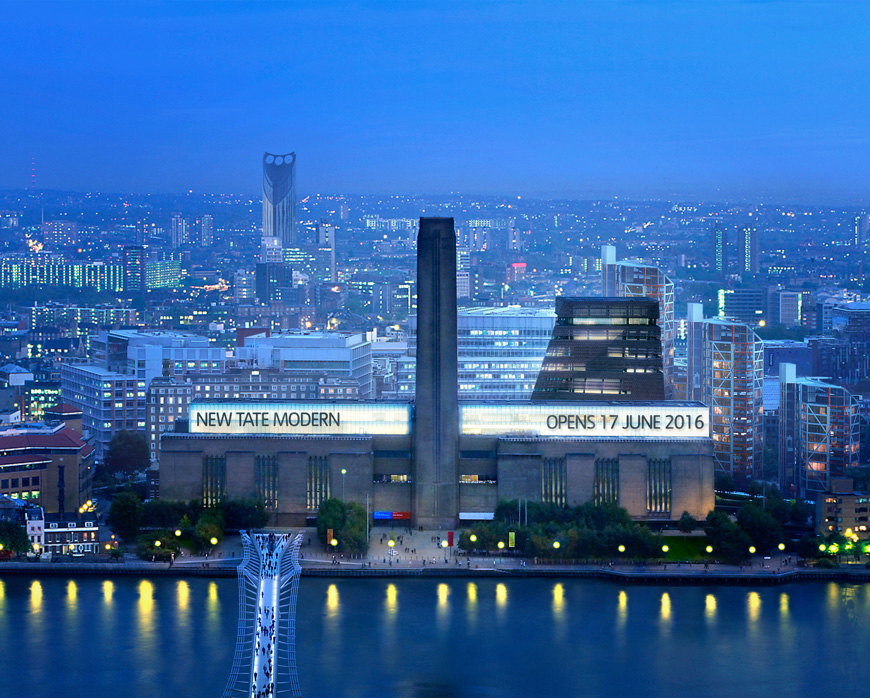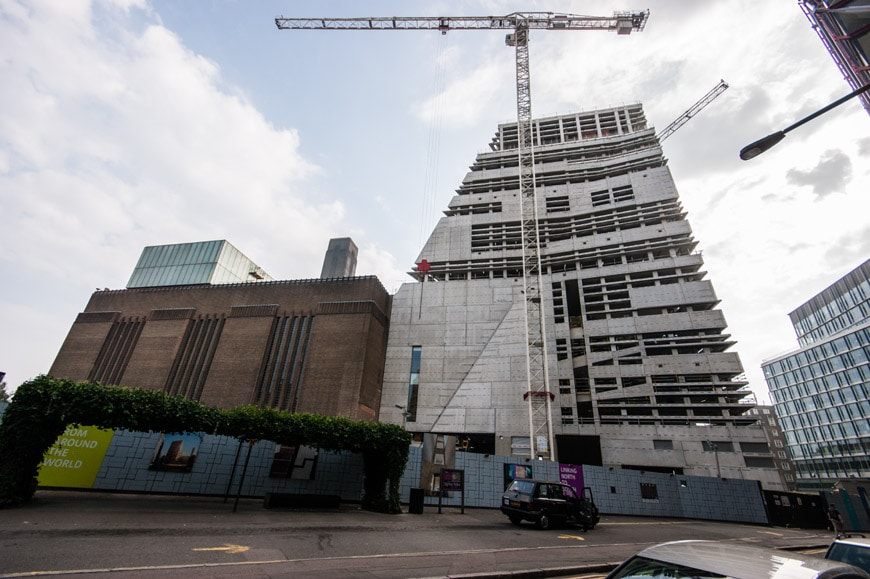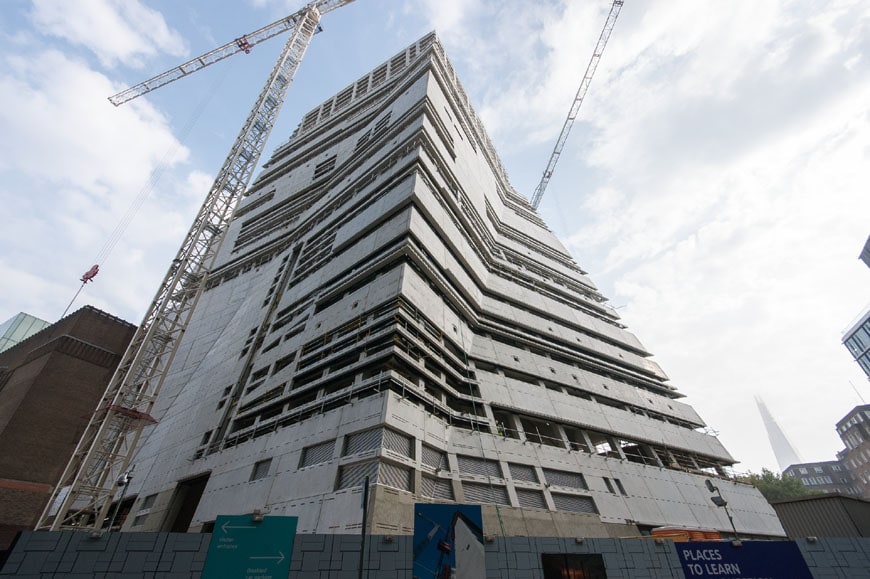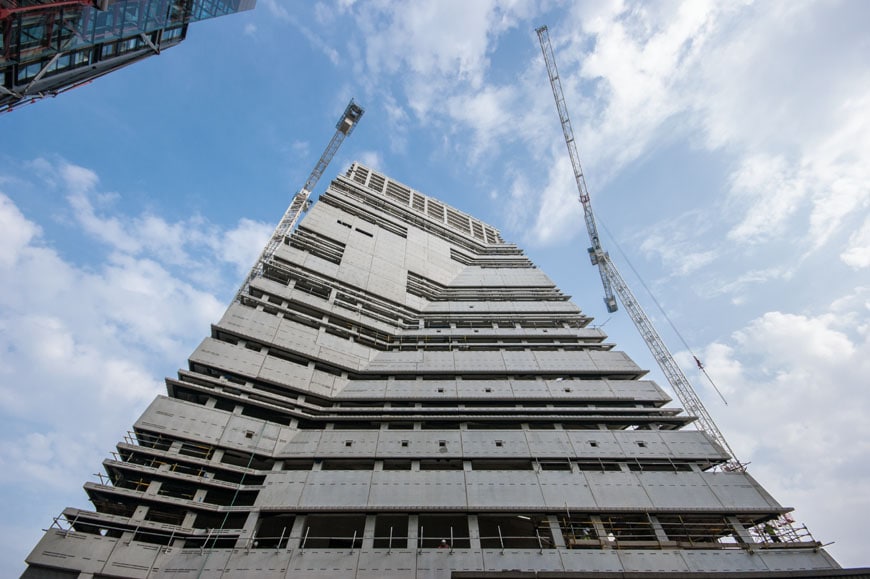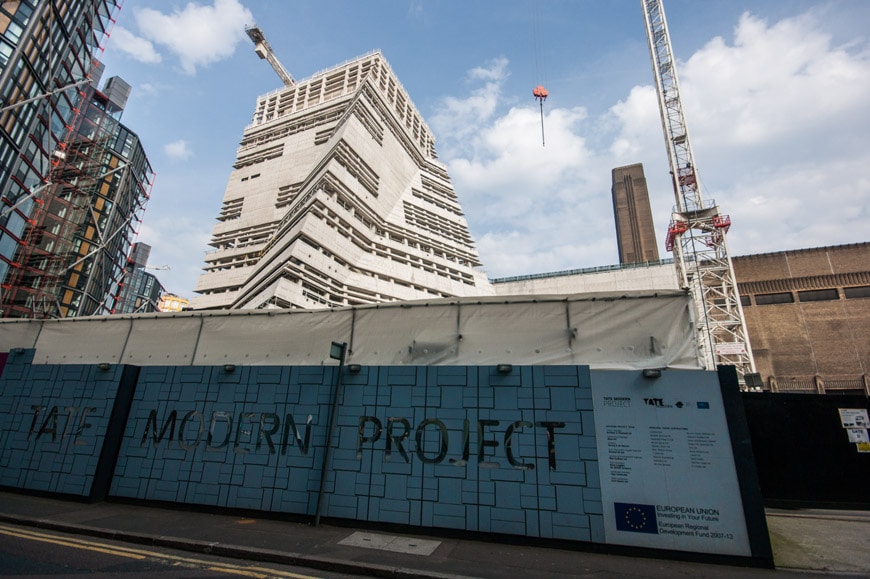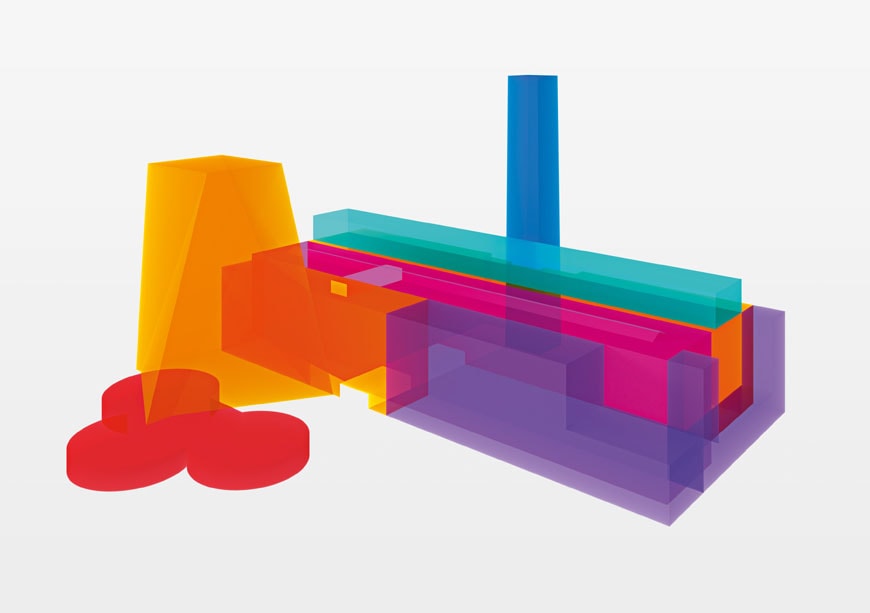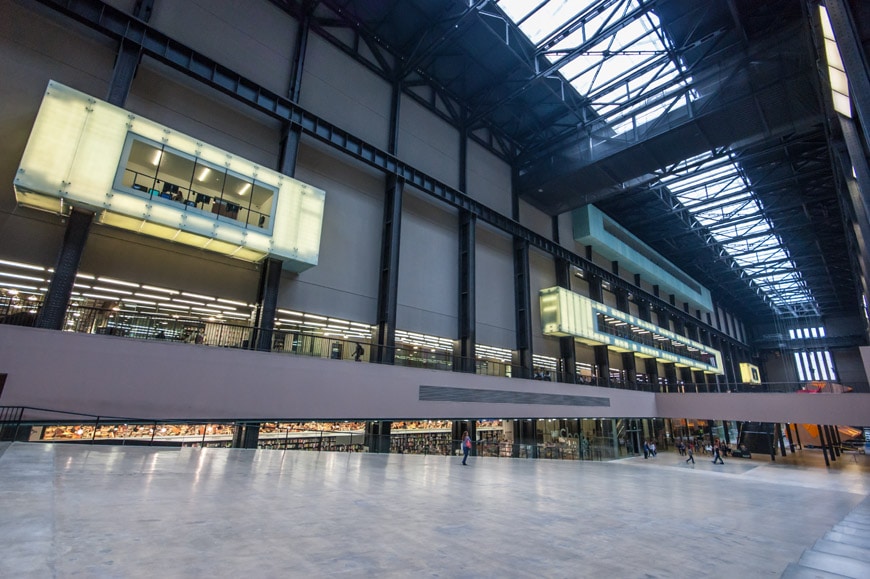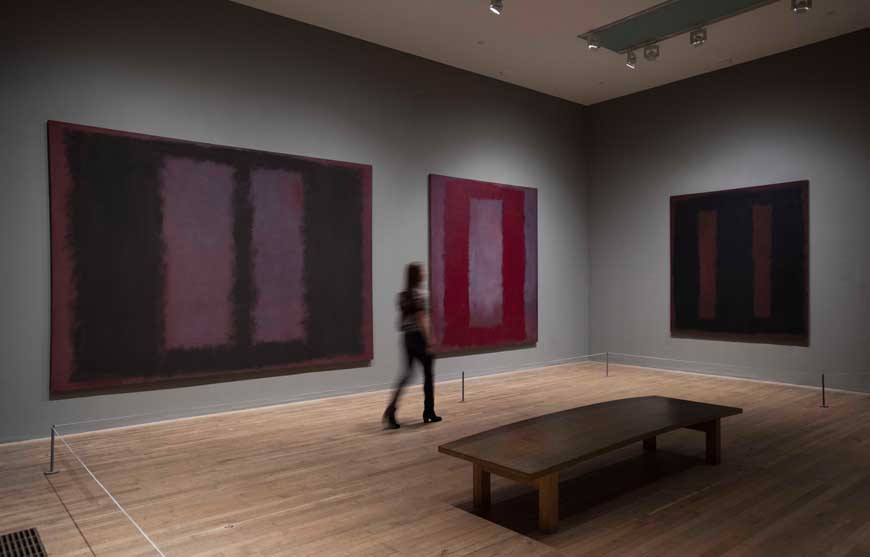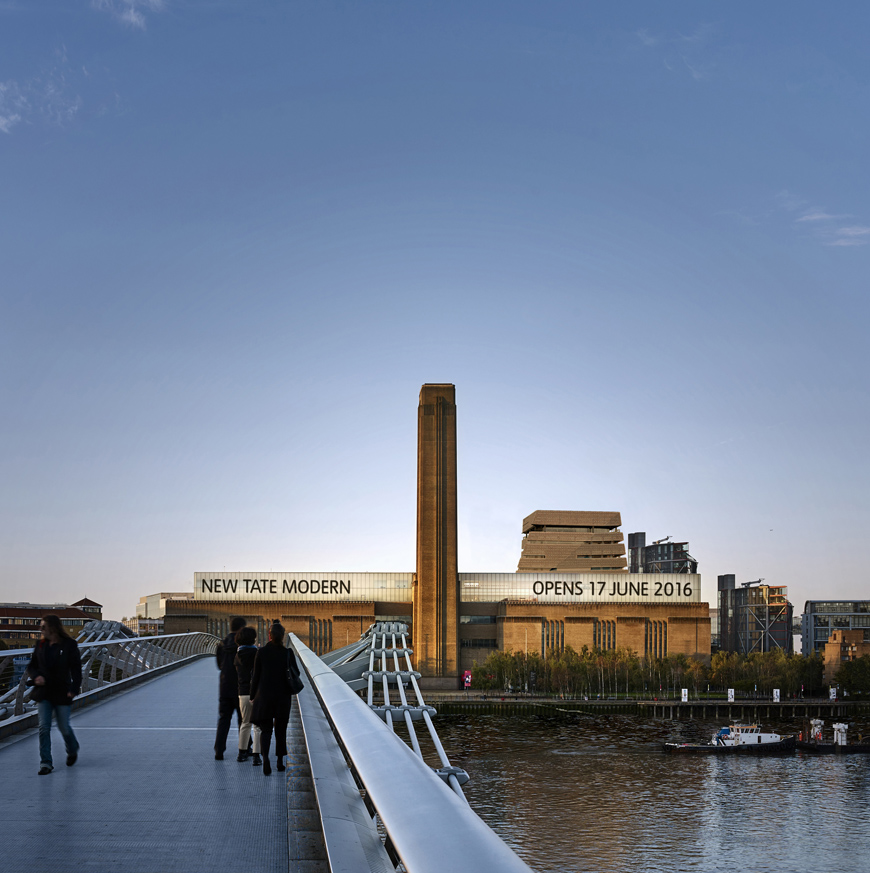London 2015, building Herzog & de Meuron’s New Tate Modern
Tate Gallery
Photos: see captions
The new Tate Modern © Hayes Davidson and Herzog & de Meuron. Courtesy of Tate Modern
Building the New Tate Modern in London
London, September 2014.
While approaching the Tate Modern after crossing the Thames by the Millenium Bridge, a visitor can hardly imagine what is currently happening behind the glorious former Bankside Power Station which is the house of the celebrated London museum since 2000.
An impressive faceted construction is rising day after day and, when we visited the Tate Modern in mid-September 2014, its final shape was substantially completed, letting people easily imagine how much this addition will be both imposing and intriguing.
Now, as of October 2015, the structure is completed and interior fit-out works and external finishing are ongoing. Tate announced the grand opening of the new Tate Modern on June 17, 2016.
The Switch House under construction. Photos © Inexhibit (September 2014)
The new building will provide the Tate with about 242,000 square feet (22,500 square meters) of additional gross floor area that will accommodate exhibition spaces, education rooms, performance spaces, offices, catering, and retail spaces, panoramic terraces, as well as car parking, and two brand new urban spaces.
To design the expansion, Herzog & de Meuron architects reunited with designer Jasper Morrison and landscape architect Günther Vogt, thus re-creating the team that in 1995 conceived the original renovation project of the Tate Modern.
65 meters high, the 11-floor-level expansion will be connected to the old building at levels 1 and 2 and through a pedestrian bridge at level 5. The £ 260-million addition will be clad with red bricks to harmonize its appearance with that of the former Bankside Power Station.
To improve sustainability and reduce the impact on the environment, waste heat recovery, groundwater cooling, and geothermal heat pump-based heating and cooling have been adopted.
The Switch House under construction. Photo © Inexhibit.(September 2014)
The new building, called Switch House, is not simply an expansion, it will completely redefine the Tate Modern complex morphology and logic.
Indeed, the Turbine Hall’s gigantic space will become the core of the museum, bordered on the north by the 6-story Boiler House and on the south by the new 10-story Switch House.
Therefore, the exhibition galleries layout will be completely redesigned to provide a great depiction of art from the origin of modernism to the present day across the whole world, from established centers such as Berlin, Paris, London, and New York, to emerging ones like Tokyo, São Paulo, New Delhi, Bangkok and more.
The New Tate Modern (functional scheme) © Peter Saville with Paul Hetherington and Morph. Courtesy of Tate Modern
The Turbine Hall at Tate Modern. Photo © Inexhibit
Mark Rothko, Seagram Murals, Tate © Kate Rothko Prizel and Christopher Rothko/DACS 1998. Photography credit: Tate Photography. Courtesy of Tate Modern
The objective behind the Tate Modern redesign and expansion is clearly expressed in the words of Chris Dercon, Tate Modern director: ‘Art is one of the most dynamic and engaged forms of human behavior, and when people step into a museum today, they don’t want to step out of their life, they want to get closer to it. The new Tate Modern will be so much more than a container for art, it will be a platform for human encounters.’
The new Tate Modern © Hayes Davidson and Herzog & de Meuron.Courtesy of Tate Modern

Tate Modern is a museum of modern and contemporary art in central London housed in an iconic building complex designed by Herzog & de Meuron architects
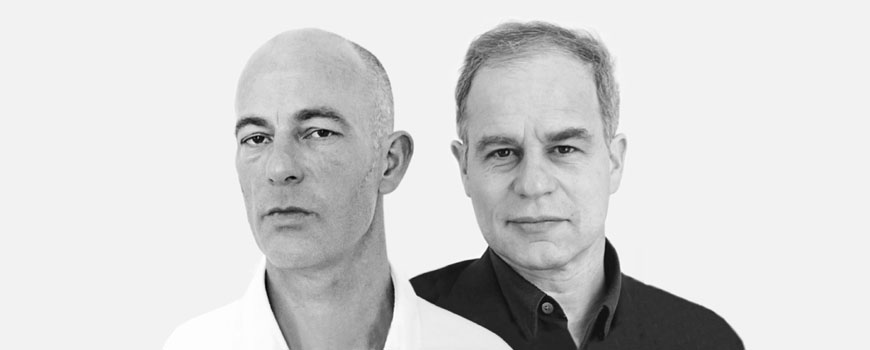
Herzog & de Meuron
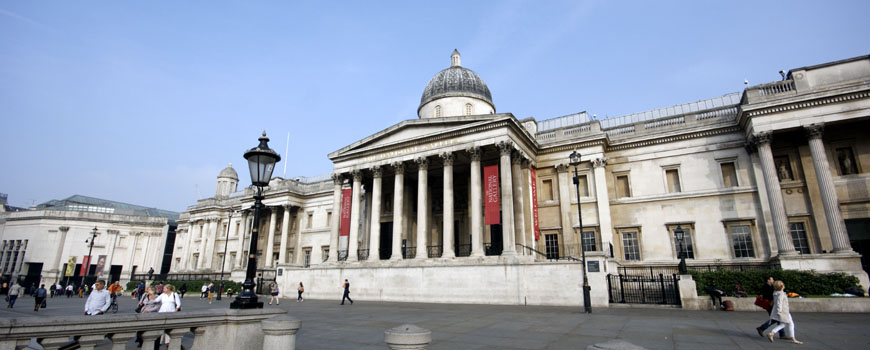
London
copyright Inexhibit 2025 - ISSN: 2283-5474

